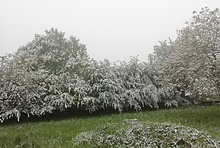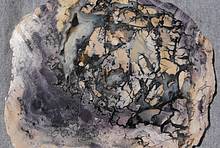Home PageAbout MindatThe Mindat ManualHistory of MindatCopyright StatusWho We AreContact UsAdvertise on Mindat
Donate to MindatCorporate SponsorshipSponsor a PageSponsored PagesMindat AdvertisersAdvertise on Mindat
Learning CenterWhat is a mineral?The most common minerals on earthInformation for EducatorsMindat ArticlesThe ElementsThe Rock H. Currier Digital LibraryGeologic Time
Minerals by PropertiesMinerals by ChemistryAdvanced Locality SearchRandom MineralRandom LocalitySearch by minIDLocalities Near MeSearch ArticlesSearch GlossaryMore Search Options
The Mindat ManualAdd a New PhotoRate PhotosLocality Edit ReportCoordinate Completion ReportAdd Glossary Item
Mining CompaniesStatisticsUsersMineral MuseumsClubs & OrganizationsMineral Shows & EventsThe Mindat DirectoryDevice SettingsThe Mineral Quiz
Photo SearchPhoto GalleriesSearch by ColorNew Photos TodayNew Photos YesterdayMembers' Photo GalleriesPast Photo of the Day GalleryPhotography
╳Discussions
💬 Home🔎 Search📅 LatestGroups
EducationOpen discussion area.Fakes & FraudsOpen discussion area.Field CollectingOpen discussion area.FossilsOpen discussion area.Gems and GemologyOpen discussion area.GeneralOpen discussion area.How to ContributeOpen discussion area.Identity HelpOpen discussion area.Improving Mindat.orgOpen discussion area.LocalitiesOpen discussion area.Lost and Stolen SpecimensOpen discussion area.MarketplaceOpen discussion area.MeteoritesOpen discussion area.Mindat ProductsOpen discussion area.Mineral ExchangesOpen discussion area.Mineral PhotographyOpen discussion area.Mineral ShowsOpen discussion area.Mineralogical ClassificationOpen discussion area.Mineralogy CourseOpen discussion area.MineralsOpen discussion area.Minerals and MuseumsOpen discussion area.PhotosOpen discussion area.Techniques for CollectorsOpen discussion area.The Rock H. Currier Digital LibraryOpen discussion area.UV MineralsOpen discussion area.Recent Images in Discussions
Techniques for CollectorsTesting carbonates in weak acids

4th Jul 2012 19:00 UTCAnonymous User
Calcite freely produces bubbles when placed in household vinegar. I usually place a tiny fragment of the mineral
to be tested in a small shot glass and look for bubbles on the surface of the sample under low power microscope.
My question is will other carbonates also test positive in household vinegar? Specifically interested in distinguishing
calcite from rhodochrosite.
Thanks,
George Balogh
Portage, MI

4th Jul 2012 19:33 UTCAlfredo Petrov Manager
(At this point on Mindat, somebody usually steps into the discussion to remind us how dangerous this is and say we're all gonna die, so I'd like to state up front that I use only tiny grains of mineral, in a few drops of acid, and point the test tube away from my eyes while warming over the flame, so death is far more likely to come via my skis, bike or french fries than from my chemistry set.)
4th Jul 2012 21:02 UTCPaul Brandes 🌟 Manager
I don't ever remember rhodochrosite bubbling in vinegar, but in heated HCL it will bubble vigorously. Same with dolomite, magnesite, and a fresh surface of siderite. If it's what I'm thinking you're trying to ID George (UP specimens?), the rhodo will have a very slight pink tint to it where the calcite is white, in most cases of course.
5th Jul 2012 00:23 UTCSteve Hardinger 🌟 Expert
5th Jul 2012 01:03 UTCReiner Mielke Expert

5th Jul 2012 06:29 UTCBen Grguric Expert
There are a whole series of simple mineral tests given in Donald Peck's book, Mineral Identification. You can get this from the Mineralogical Record website. A very useful book for anyone interested in identifying their own specimens. Both amateurs and professionals use it.
Regards,
Ben.

5th Jul 2012 16:51 UTCDonald Peck
It is important to remember that the rate of a reaction is related to the size of the particles, the temperature, the strength of the acid (degree of ionization), and the concentration (dilution). So one has to be careful in generalizing about the different species of carbonates and how much or how little they bubble with acid. For careful work, I prefer using a small amount of finely powdered mineral in the well of a depression microscope slide. The acid can be placed above the well on the slide until it is under the microscope and then drawn into the well with a probe. If heating is required, the slide can be heated by passing it through an alcohol lamp flame or setting it on a lamp bulb. I have not tried to quantify the difference in effervescence among mineral species, except for calcite and dolomite. The detection of iron or manganese is extremely easy and can be done on the drop or two of solution remaining in the well.
Another thing, vinegar is easily available, but its concentration is not always the same. In most of the US it is 5%, but in some states it is higher. I think in the UK it may be 20%. All this affects the rate of reaction.




Mindat.org is an outreach project of the Hudson Institute of Mineralogy, a 501(c)(3) not-for-profit organization.
Copyright © mindat.org and the Hudson Institute of Mineralogy 1993-2024, except where stated. Most political location boundaries are © OpenStreetMap contributors. Mindat.org relies on the contributions of thousands of members and supporters. Founded in 2000 by Jolyon Ralph.
Privacy Policy - Terms & Conditions - Contact Us / DMCA issues - Report a bug/vulnerability Current server date and time: April 23, 2024 23:09:39
Copyright © mindat.org and the Hudson Institute of Mineralogy 1993-2024, except where stated. Most political location boundaries are © OpenStreetMap contributors. Mindat.org relies on the contributions of thousands of members and supporters. Founded in 2000 by Jolyon Ralph.
Privacy Policy - Terms & Conditions - Contact Us / DMCA issues - Report a bug/vulnerability Current server date and time: April 23, 2024 23:09:39











